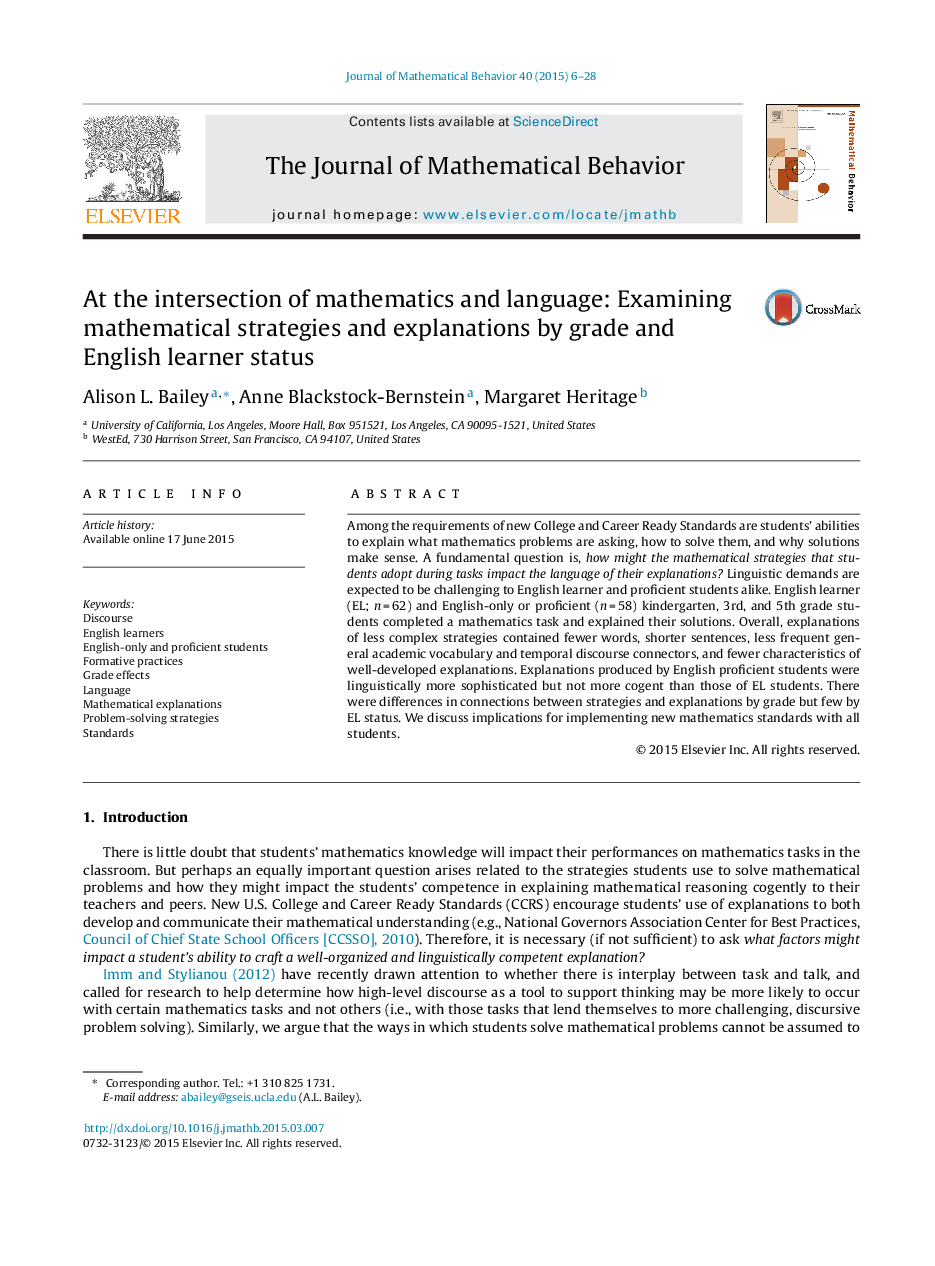| Article ID | Journal | Published Year | Pages | File Type |
|---|---|---|---|---|
| 360639 | The Journal of Mathematical Behavior | 2015 | 23 Pages |
•Linguistic demands of new mathematics standards challenge English learner and proficient students alike.•Different mathematical strategies were related to different linguistic and discourse features of explanations.•Grade influenced strategy-language connections.•Strategy-language connections were mainly one of degree not difference due to EL status.•Implications include providing support for oral display of mathematical understanding with all students.
Among the requirements of new College and Career Ready Standards are students’ abilities to explain what mathematics problems are asking, how to solve them, and why solutions make sense. A fundamental question is, how might the mathematical strategies that students adopt during tasks impact the language of their explanations? Linguistic demands are expected to be challenging to English learner and proficient students alike. English learner (EL; n = 62) and English-only or proficient (n = 58) kindergarten, 3rd, and 5th grade students completed a mathematics task and explained their solutions. Overall, explanations of less complex strategies contained fewer words, shorter sentences, less frequent general academic vocabulary and temporal discourse connectors, and fewer characteristics of well-developed explanations. Explanations produced by English proficient students were linguistically more sophisticated but not more cogent than those of EL students. There were differences in connections between strategies and explanations by grade but few by EL status. We discuss implications for implementing new mathematics standards with all students.
